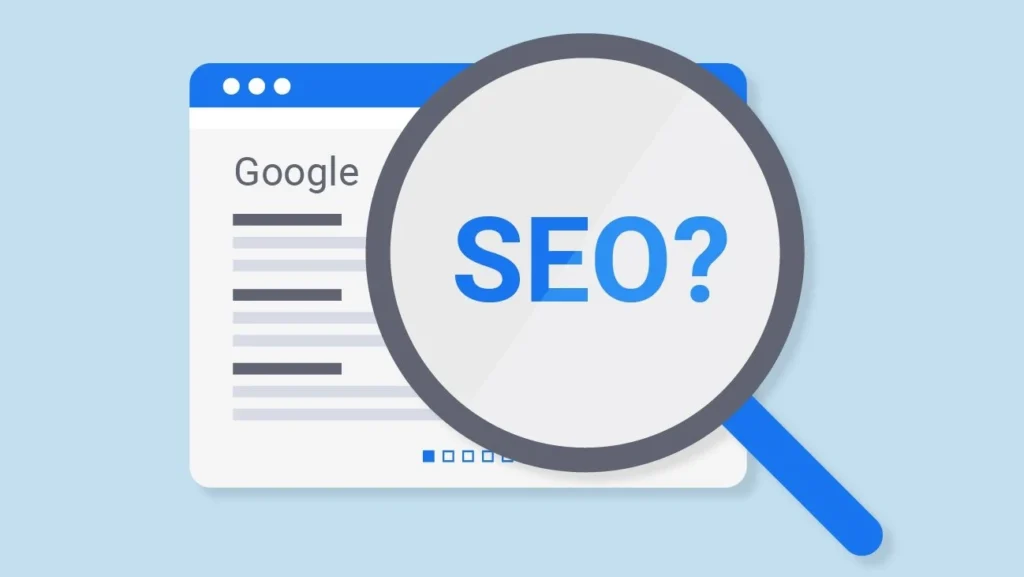In today’s digital landscape, delivering a positive user experience (UX) is not just a design consideration—it’s a critical aspect of search engine optimization (SEO). Google’s algorithms have evolved to prioritize user satisfaction, meaning that websites offering an exceptional experience tend to rank higher. This blog will explore how user experience in SEO directly impacts performance and what you can do to improve both for a more effective online presence.. as recommended by any SEO expert
User experience (UX) refers to the way a user engages with and navigates a website. It encompasses factors such as usability, accessibility, and overall satisfaction. A website with excellent UX is intuitive, easy to navigate, and provides valuable information that meets users’ needs.
Key components of UX include:
- Usability: How easily users can navigate and complete tasks on your site.
- Design: Visual appeal and layout, which influence user engagement.
- Accessibility: Ensuring your site is accessible to everyone, including users with disabilities.
UX is not just about looking good—it’s about creating a seamless, user-friendly environment that keeps visitors engaged and encourages them to return. Any SEO expert will emphasize the importance of user experience in SEO for improving search rankings.
Why UX Matters in SEO
Search engines, particularly Google, are designed to prioritize websites that offer users a satisfying experience. This is reflected in Google’s algorithm updates, such as Core Web Vitals, which measure the quality of a user’s experience on a page. Factors like page load time, interactivity, and visual stability all play a role in how Google ranks a site.
Additionally, poor UX can lead to high bounce rates, lower dwell time, and fewer conversions, which negatively impact your SEO performance. A positive user experience in SEO enhances these metrics, helping your site perform better in search rankings
Key UX Factors That Affect SEO
Several UX factors directly influence SEO performance. Understanding and optimizing these elements can dramatically improve your site’s search engine visibility.
- Website Speed Fast-loading websites are essential. Users expect sites to load quickly, and if your page takes longer than three seconds, you’re likely to lose potential visitors. Google also prioritizes fast-loading sites, making speed a critical ranking factor. Tools like Google PageSpeed Insights and GTMetrix can help you measure and improve your site’s speed.
- Mobile-Friendliness With Google’s shift to mobile-first indexing, it’s essential to ensure your site is optimized for mobile devices. This means implementing responsive design that adapts to different screen sizes, ensuring your content remains accessible and easy to navigate on smartphones and tablets.
- Site Navigation and Structure Clear, intuitive navigation is crucial for both users and search engines. A well-organized site structure helps users find information quickly and allows search engine crawlers to index your content efficiently. Using a logical hierarchy of pages and internal linking can significantly improve your site’s usability and SEO.
- Content Readability Readable content enhances user experience and SEO. Legible fonts, concise paragraphs, and well-organized information make it easier for users to digest your content. Additionally, content should directly address user queries with clear, actionable insights, boosting both engagement and search engine relevance. User experience in SEO is strengthened when content is easy to read and provides clear value.
- Visual Appeal and Design While visual design might seem separate from SEO, it plays a pivotal role in keeping users engaged. A well-designed website that balances aesthetics with functionality reduces bounce rates and encourages longer sessions—both of which are favorable SEO metrics.
- Interactivity and User Engagement Interactive elements such as buttons, forms, and videos engage users, enhancing their overall experience. Increased engagement often translates to higher dwell time, signaling to search engines that your content is valuable and relevant to users.
How UX Enhances SEO Metrics
Improving UX can positively impact several key SEO metrics:
Bounce Rate and Dwell Time: A poor UX leads to higher bounce rates, as users leave immediately after landing on your page. By improving UX, you can lower your bounce rate and increase dwell time, both of which are favorable to SEO and contribute to an enhanced user experience in SEO
Click-Through Rate (CTR): A compelling UX, starting with well-optimized meta titles and descriptions, can improve your CTR from search engine results pages (SERPs). The more users click through to your site, the better your chances of climbing the rankings.
Conversion Rates: UX improvements make it easier for users to navigate and complete actions, such as making a purchase or signing up for a newsletter, thereby boosting your conversion rates.
User Retention: Good UX encourages users to return. Repeat visitors signal to search engines that your site offers consistent value, further improving your SEO standing.
Many websites have successfully leveraged UX improvements to boost SEO rankings. For example, websites that optimize their page speed and mobile responsiveness often see significant jumps in their rankings. A clear site structure and easy-to-navigate menus also result in better search engine visibility. Several companies have reported higher engagement, increased conversions, and improved SEO performance by prioritizing UX enhancements.
Tools to Measure and Improve UX for SEO
To enhance UX and, by extension, SEO, consider using the following tools:
- Google Lighthouse: Provides detailed reports on site performance, accessibility, and SEO.
- Hotjar or Crazy Egg: Use heatmaps to analyze user behavior on your website.
- UsabilityHub: Conduct user tests to gather insights on how visitors interact with your site.
- Google Analytics: Track metrics such as bounce rate, dwell time, and user flow to assess UX effectiveness.
Best Practices for Integrating UX and SEO
To truly optimize both UX and SEO, it’s essential to foster collaboration between UX designers and SEO specialists. A well-designed website is only effective if it also meets the criteria for search engine ranking. Conduct regular testing and updates to ensure your site stays aligned with both UX and SEO best practices, and always be prepared to adapt as Google’s algorithms evolve. Maintaining a good user experience in SEO is key to long-term success.
User experience (UX) and SEO are no longer separate disciplines—they are deeply interconnected. A website that provides an exceptional user experience will naturally perform better in search engine rankings. By focusing on key UX factors such as speed, mobile-friendliness, navigation, and readability, you can enhance both your users’ satisfaction and your SEO results.
If you’re looking to boost your website’s performance, it’s time to prioritize user experience in SEO. Start with a comprehensive UX audit or consult with an SEO expert to identify areas for improvement that will have a long-lasting impact on your SEO success.

Krishnendu (Kriz) – Kerala’s No. 1 Freelance SEO Expert, with an MBA in HR and Marketing and extensive experience across various marketing fields, Krishnendu, popularly known as Kriz, has established himself as Kerala’s leading freelance SEO expert. Transitioning into digital marketing, he quickly specialized in SEO, leveraging his strong knowledge of branding and digital marketing concepts. Kriz has successfully managed multiple projects, helping businesses enhance their online visibility and drive organic traffic to their websites. His expertise lies in crafting strategic digital marketing and branding plans tailored to each client’s unique needs and objectives, and implementing effective optimization techniques to improve search engine rankings.



